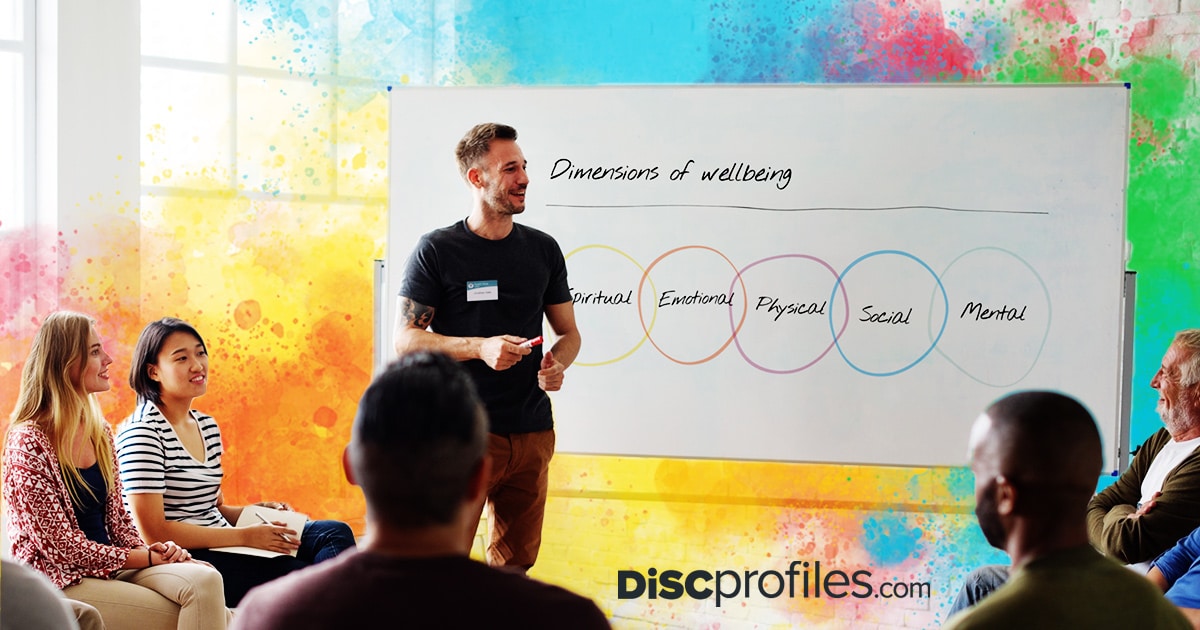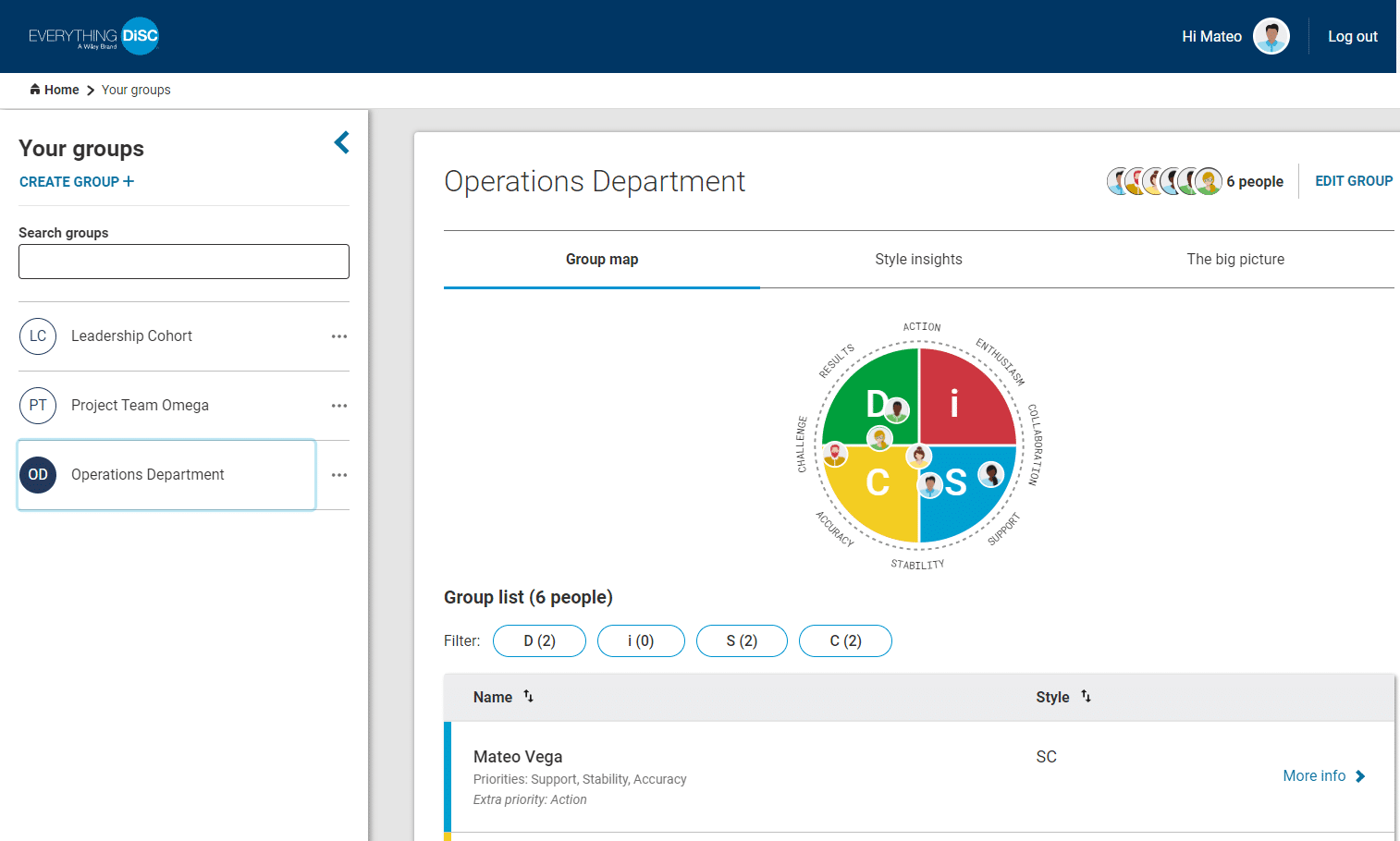2022 was a year of evolution in the world of work. On the heels of two unprecedented years of change due to the COVID-19 pandemic, individuals developed new day-to-day priorities. They reassessed their futures and their career paths, and generated demand for a completely new kind of workplace.
The Great Resignation kicked off in 2022. It was a historic moment in which millions were quitting their jobs to start something new. People craved the more human aspects of work. They sought purpose and balance.
Then, the phenomenon of Quiet Quitting rose to the forefront of workplace trends as individuals experienced intense post-pandemic burnout and sought to embrace a stronger balance between work and personal life.
All in all, these workplace trends showed that standard workplace practices weren’t cutting it anymore. Work mantras like “Work hard, play hard” and “Pay your dues and climb the corporate ladder” no longer resonated with people. Employees wanted opportunities for connection and advancement. They wanted work/life balance and purpose-driven projects. They wanted to feel fulfilled and supported.
Amid new employee attitudes, workplaces had to adapt. One change that came in many organizations in response to these new attitudes was a renewed emphasis on workplace wellness.
What is workplace wellness?
You might ask yourself, what exactly are we talking about when we say, “wellness?” The Berkeley Well-Being Institute describes how wellness is a fusion of physical health and other dimensions of health that help us to feel safe and successful.
“Usually when people are referring to ‘health,’ they mean physical health, and when people say ‘well-being,’ they are referring to mental health. Wellness is a somewhat broader term that generally includes both physical health and mental well-being as well as other dimensions like spirituality.”
Workplace wellness initiatives, or programs designed to help improve all-around employee well-being, have been on the rise in the post-pandemic workforce. Successful programs are seeing positive results.
In Wiley’s most recent Workplace Intelligence survey, 46.9% of all respondents and 50.5% of respondents with direct reports said that a focus on employee wellness has positively impacted performance.
Corporate Wellness Magazine notes that workplace wellness initiatives can also improve employee engagement, promote teamwork and collaboration, and cut costs by reducing time lost to health and wellness-related issues.
The process of building and strengthening workplace wellness initiatives is becoming more crucial as the world of work changes and companies strive to increase employee satisfaction and reduce turnover. With good planning practices and people-centered tools like Everything DiSC assessments, you can build a program that engages employees and generates both productivity and satisfaction.
Crafting a successful workplace wellness program
What steps do I take?
The CDC’s Workplace Health Resource Center notes that three basic steps can help employers create an engaging workplace wellness program. These steps ensure that your program includes insights from your employees and has a measurable impact.
- Design and analyze: Seek employees’ input. Assess their interest in participating!
- Implement: Build your program: provide free or low-cost program options and communicate these to employees through relevant channels.
- Evaluate success: Collect participation data, employee feedback, and success/impact stories. Then, rebuild parts of your program that aren’t garnering participation or enjoyment from employees.
Let’s dive into some tips and ideas for each of these steps.
Design and analyze
Knowing where to start when building a corporate wellness program can be difficult. Workplace wellness programs aren’t as simple as offering healthier options in the company cafeteria. While physical wellness and quality nutrition are definitely part of a workplace wellness initiative, there are many other areas of wellness that also require attention in the workplace. In fact, The Berkeley Well-Being Institute identifies eight dimensions of wellness:
- Emotional wellness
- Environmental wellness
- Physical wellness
- Intellectual wellness
- Occupational wellness
- Social wellness
- Financial wellness
- Spiritual wellness
These are all key areas to consider when building a workplace wellness program.
It’s tempting to try and tackle all of these at once, but building a workplace wellness program takes time.
A great way to start is by surveying your employees. Ask them directly about what wellness areas they want to see prioritized. You can use this data to set wellness objectives and build small parts of your overall wellness program designed to meet those objectives.
For example, you might survey your people and find that there’s a looming culture of stress in the workplace. As a result, you might identify the following objective:
Reduce company stress culture by introducing mindfulness and meditation concepts.
With this objective in mind, you could build out part of your workplace wellness program.
Mindfulness and meditation:
- Get a company-wide subscription to a meditation app.
- Hire a meditation coach to host guided group meditations and breathwork sessions on Zoom once every two weeks.
- Create a mindfulness group chat or channel with weekly mindfulness exercises and journal prompts. Invite colleagues to share their reflections.
- Instruct management to encourage blocking off 15-20 minute breaks on calendars for walks, listening to music, meditation, etc.
- Block off a room or small area of the office for quiet mindfulness exercises and meditation breaks.
By breaking down your wellness program into smaller, objective-based initiatives, you can begin to intentionally incorporate multiple dimensions of wellness. It ensures that data from your employees stays at the forefront of your efforts!
You can also delegate responsibilities and ensure that equal effort is dedicated to each objective, and ultimately drive better results.

Design and analyze with DiSC!
Keeping your people at the center of your workplace wellness programs is key, and the only way to do that is by learning more about them. As mentioned before, a company-wide survey is a great way to discover your employees’ wellness interests and prioritize which initiatives you’ll start with. You’ll also want to gather information about their personalities, motivators, and stressors in order to generate buy-in.
Enter Everything DiSC®—the personality assessment that generates insights into employees’ workplace preferences. Everything DiSC Workplace® assessment-takers receive 20-page reports about their DiSC styles and their workplace preferences and stressors. These reports also offer guidance around the kinds of tasks that energize respondents, and what tasks take a bit of extra effort. You can get a high-level view of your company’s DiSC data by running a group report, which will show you the distribution of styles.
You can also get insights about your people using Catalyst, Everything DiSC’s interactive learning platform. In the “Your Groups” section, you can view different groups of your colleagues and discover what their DiSC styles are. Using the “Group Continua” feature, you can also view where they fall on different behavioral continua and uncover the range of preferences that exist on your teams.
Incorporating DiSC assessments can help strengthen your professional wellness program by adding another layer of customization. By knowing more about the people you’re building the program for, you can create activities and rewards that appeal to everyone.
For example, you may see in your group report that you have a lot of i-style individuals in your organization who love to socialize. They’re motivated by interpersonal connection and enthusiasm. At the same time, you might notice that you have a high percentage of C-style employees who love their routines and are stressed out by too much time spent off-task. As a result, you may want to build a program that contains both immersive social activities and workshops, and options that allow employees to take what they need, such as virtual webinars and meditation app subscriptions. Including activities and benefits that appeal to a wide range of personalities is important, and DiSC allows you to see what options will appeal to your people.
Looking at the DiSC styles that exist across your organization is a great way to gather some data on what your people might want from a wellness program. After you collect your data and begin planning, it’s time to build out your program!

Implement your program
Given the different types of wellness, there are a number of initiatives you could start with when implementing a new wellness program. Here are some ideas that have the potential to be continually supported using DiSC assessments and learning tools.
Cultivate a culture of psychological safety
Amy Edmundson’s concept of psychological safety centers on how individuals think they’re perceived in their workplaces. It is the belief that you won’t be ostracized or punished for voicing concerns and opinions, sharing ideas, and making mistakes. A sense of psychological safety could have a tremendous impact on emotional wellness.
Trust and psychological safety can improve teamwork and workplace culture. They ensure that teams are more likely to share ideas, reveal and discuss mistakes, ask for and receive feedback, take reasonable risks, and confront work-life issues.
A wellness program devoted to psychological safety could include a variety of activities and workshops. Primarily, group DiSC sessions could help teams get to know one another better. DiSC assessments give coworkers more insights into their workplace motivators, stressors, and preferences. Following a DiSC session, when ideas and concerns are shared, coworkers have more knowledge about the personalities behind the ideas and concerns. They understand why people think and feel how they do, and are able to determine the best ways to respond. This practice of interpersonal learning is the best way to create an environment of psychological safety on teams. It creates a sense of emotional well-being in day-to-day team dynamics.
Additionally, routine “town hall” meetings where employees can communicate directly with upper-level management could be a great component of a workplace wellness program focused on psychological safety. In a 2022 Wiley Workplace Research study, “listening sessions with leaders” was one of the five policies correlated to lower employee stress. These meetings give managers the opportunity to respond and have an open dialogue with employees. Doing this regularly can remove the fear of punishment or embarrassment that often comes with voicing concerns to higher-ups.
Introduce a wellness challenge
Workplace wellness challenges are a fun way to promote physical wellness and build community. Technology has made it easier than ever to build one of these challenges, whether your team works in person or fully remotely. Using activity tracking apps like Strava, you can create group challenges for activities like walking and running. You can have employees participate as individuals or as teams, and add prizes for your top teams to up the stakes! Meditation apps can help you create a similar challenge, but one that challenges employees to focus on mental wellness and take time to recenter with mindfulness practices.
You can also host virtual or in-person fitness classes, and challenge employees to attend. From strength training to yoga, you can find an instructor to host a class and challenge employees to try it. Consider giving shoutouts to attendees via your internal communication channels or offering a prize like a group lunch to the team with the highest number of class attendees.
When building physical wellness challenges, DiSC assessments are your secret weapon. Using the “Your Colleagues” section on Catalyst, you can view your colleagues’ motivators. Maybe public recognition is their thing. Maybe it’s the promise of a reward. Maybe it’s a private note of recognition, or the opportunity to collaborate with others. You can take information about employees’ workplace motivators and build a variety of challenges and incentives that appeal to all of them.

Build a culture of reaching out
To promote mental, social, and occupational wellness, it’s important to create a culture in which employees reach out to coworkers who may be struggling. No one wants to feel left alone with their problems and stressors. Talking about these things in the workplace helps to strengthen bonds between coworkers and helps teams know when to redistribute workloads in order to prevent burnout. A blog post from Daily Dose Wellness, a corporate wellness consulting company, provides advice for noticing when your coworkers might be having a difficult time at work, and asking intentional questions to help them open up.
For example, instead of asking an open-ended question like “How are you?”, you can try leading with vulnerability on your end, and say something like, “I’ve been feeling x, have you been feeling that way too?” This can help your coworker feel more comfortable opening up.
Additionally, the article from Daily Dose Wellness suggests making a note of behavioral changes, as those can be signs that employees aren’t feeling their best. You could say something like, “Hey, I haven’t heard much from you in our team group chat. Do you want to catch up over coffee sometime?” This shows that you see and care about what your coworkers are going through, and gives you the time and space to reconnect with them.
This culture of reaching out can help employees maintain a sense of connectedness at work and give them the platform to seek support from their teammates.
A culture of reaching out also helps employees feel comfortable expressing gratitude. The practice of giving and receiving words of encouragement has positive psychological effects and can help employees feel a heightened sense of purpose and confidence. A wellness program that normalizes sending words of gratitude could have a positive impact on employee morale.
So, what can you do from a programmatic standpoint to help build a culture of reaching out? There are a number of options depending on what motivates your people.
Host an in-person or virtual workshop on how to reach out to and help coworkers that might be struggling at work. Encourage your managers to discuss the importance of reaching out to teammates in individual and team meetings. Encourage them to model that behavior as well! Invest in a technology tool that helps teams express gratitude for one another, like a virtual gifting platform or a thank you note integration for your existing internal messaging platform.
If there’s one thing the COVID-19 pandemic taught us, it’s that people are getting super creative about staying connected. When you take advantage of the tools that are out there, the possibilities are truly endless!
Host workshops and events
Social well-being is important in the workplace, especially for those i-style and S-style individuals who value connection and collaboration. Events and workshops can help bolster social well-being while approaching other wellness topics.
For example, you could have a financial planning expert host a workshop to help employees develop stronger financial literacy and implement financial wellness strategies. You could have a meditation coach host a workshop on meditation and mindfulness practices that help employees cope with workplace stress. You could have an expert on spatial design host a workshop on how to organize your workspace in order to create harmony and productivity—a key component of environmental wellness.
All of these events give employees the opportunity to connect with each other while focusing on a new element of wellness.
Remember to ensure that there are resources that attendees can use on an ongoing basis after the workshop to deepen their learning, such as websites, videos, follow-up sessions, and employee interest groups and committees.
Have professional or life coaching resources available for when employees feel stuck
Employers have seen an uptick in demand for occupational wellness initiatives, or programs that help employees propel their career growth and increase career satisfaction. In order to meet these demands, organizations should have the goal of helping their employees develop new skills and grow to new career heights during their tenure.
Employers can do this by making professional and life coaching resources available to employees. Sometimes, it’s helpful to get advice from a trained coach who is familiar with your field and potential avenues for growth.
Coaches can help employees set goals and craft steps that will help them reach those goals. They prevent employees from feeling stagnant or bored with their work and help them identify new challenges they may want to take on.
Additionally, the International Coaching Federation reports that a company culture that embraces coaching is correlated with higher company performance.
The DiSC assessment is a great baseline for the coaching experience, as it provides the coach with basic insights about their assigned employee’s personality and preferences. This allows them to dive deep into what opportunities for growth exist, and what challenges need to be overcome in order to achieve one’s professional goals. A DiSC program coupled with readily available coaching resources would be an excellent foundational wellness program for any organization.

Evaluate success
After implementing a new employee wellness program, it’s important to evaluate the success of the program and determine if there are other areas where your wellness time and budget could produce more of an impact.
This is another stage of the program building process where it would be helpful to send a survey to your organization to gather data on what parts of the program are working and what parts could improve. Gathering feedback and tweaking your wellness programming based on that feedback will encourage employees to engage with it. The process demonstrates that the program is built specifically for them in accord with their needs.
You should also keep track of participation and engagement as you implement your wellness program.
- Is attendance high at wellness workshops?
- Are people making use of the wellness-centered group chats you created?
- Are there consistent numbers of participants in new wellness challenges?
Compile this data and learn which programs are most popular.
Once you process this kind of data, you can continue to change and scale your wellness program based on employee demand.
Conclusion
The demand for employee wellness initiatives is growing, but it’s important to remember that these programs don’t build themselves overnight. In order to prevent overwhelm, focus on one thing at a time. Start by learning about your people. Look at their DiSC styles and preferences. Survey them and get an idea of the kinds of wellness programming they’re interested in. Build a few starter initiatives based on that. Then, evaluate their success and scale. Remember that every small step to creating a more robust workplace wellness program is a step in the right direction! A step towards employee satisfaction and engagement, feelings of comfort and safety, and an environment that is happier and healthier.

